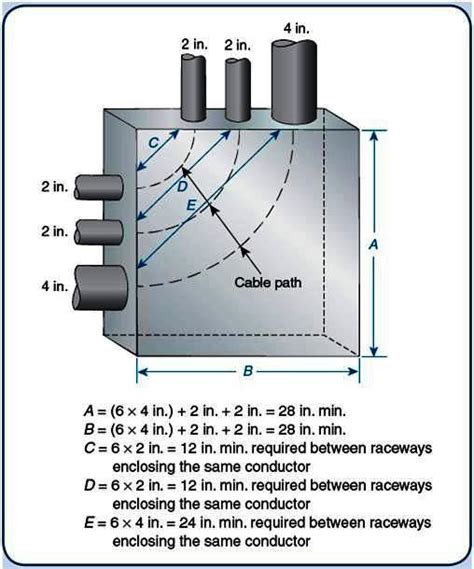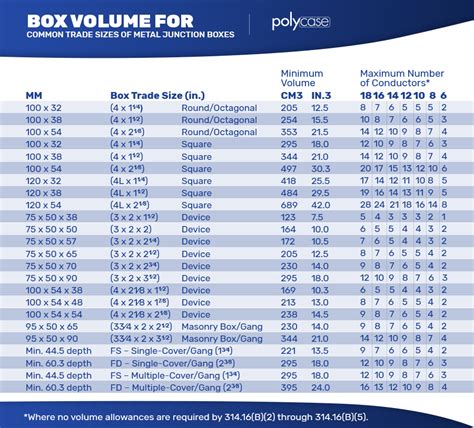electrical utility box standard size There is a huge selection of electrical boxes, varying by size, shape, mounting device, and composition. One of the first distinctions to note is that of new work boxes and remodel or cut . Used Hurco vertical machining centers for sale in USA. Hawk 5D, BMC-4020, and VM10. Find horizontal and vertical machining centers on Machinio.
0 · types of electrical outlet boxes
1 · pull box sizing chart
2 · junction box size chart
3 · electrical pull box size chart
4 · electrical box size chart
5 · electrical box dimensions standard
6 · dimensions of electrical outlet box
7 · 1 gang electrical box dimensions
When only one or two bends are needed, a sheet metal brake is the most helpful hand brake in the sheet metal industry. However, the sheet metal brake can also be utilized for the third bend on rare occasions.

types of electrical outlet boxes
Wires, receptacles and switches need adequate space. Crowded boxes can damage wires, resulting in a fire or shock hazard. You can use the chart below to calculate the .Electrical Boxes vary in size, material, number of gangs, and shape and are designed for specific uses like junctions, outlets, and switch or fixture boxes for wiring in wall or ceiling. Use this .There is a huge selection of electrical boxes, varying by size, shape, mounting device, and composition. One of the first distinctions to note is that of new work boxes and remodel or cut . By understanding the standard electrical box sizes, you can select the appropriate box for your specific electrical applications, ensuring a safe and compliant installation. Always consult a qualified electrician for proper .
Standard electrical boxes are designed for indoor use in dry locations. They come in several shapes and comprise the great majority of boxes in a household wiring system. Rectangular boxes are used for installing most .Here we describe matching 15-Amp receptacles to 15-Amp circuits, 20-Amp receptacles to 20-Amp circuits, two-wire receptacles where no ground is present, GFCI and AFCI electrical receptacles, and the proper electrical box to hold and mount these devices. Wires, receptacles and switches need adequate space. Crowded boxes can damage wires, resulting in a fire or shock hazard. You can use the chart below to calculate the required box size. Add up the numbers for the correspond- ing components in the box to find how many cubic inches you’ll need.
Octagon and standard-size round boxes are deeper than round pan boxes, and they are the standard box for ceiling- or wall-mounted light fixtures weighing up to 50 pounds. These boxes range from 1-1/2 to 3 inches deep.Electrical Boxes vary in size, material, number of gangs, and shape and are designed for specific uses like junctions, outlets, and switch or fixture boxes for wiring in wall or ceiling. Use this guide to determine the best electrical box choice for your application.There is a huge selection of electrical boxes, varying by size, shape, mounting device, and composition. One of the first distinctions to note is that of new work boxes and remodel or cut-in boxes. By understanding the standard electrical box sizes, you can select the appropriate box for your specific electrical applications, ensuring a safe and compliant installation. Always consult a qualified electrician for proper guidance and adhere to .
Standard electrical boxes are designed for indoor use in dry locations. They come in several shapes and comprise the great majority of boxes in a household wiring system. Rectangular boxes are used for installing most wall switches and outlets (receptacles) where only a single device is used. The National Electrical Code (NEC) provides guidelines for box sizing based on the number and size of wires you're working with. The NEC specifies the minimum volume of the box in cubic inches (cu. in.) that you need to accommodate your wires. Most of the PVC, or nonmetallic, boxes will have its volume listed on the box. The minimum volume required per conductor is as follows: (G = wire gauge) Standard residential wiring is typically 12 or 14G. 18G - 1.50 cubic inches per conductor. 16G- 1.75 cubic inches per conductor. 14G- 2.00 cubic inches per conductor.
I was wondering what the standard electrical wall mounting box used for sockets in america was. I was also wondering what the specifications for these boxes were, as well as, the pitch and size of the screw screw needed for the for the mounting holes.Here we describe matching 15-Amp receptacles to 15-Amp circuits, 20-Amp receptacles to 20-Amp circuits, two-wire receptacles where no ground is present, GFCI and AFCI electrical receptacles, and the proper electrical box to hold and mount these devices.
Wires, receptacles and switches need adequate space. Crowded boxes can damage wires, resulting in a fire or shock hazard. You can use the chart below to calculate the required box size. Add up the numbers for the correspond- ing components in the box to find how many cubic inches you’ll need.
Octagon and standard-size round boxes are deeper than round pan boxes, and they are the standard box for ceiling- or wall-mounted light fixtures weighing up to 50 pounds. These boxes range from 1-1/2 to 3 inches deep.

Electrical Boxes vary in size, material, number of gangs, and shape and are designed for specific uses like junctions, outlets, and switch or fixture boxes for wiring in wall or ceiling. Use this guide to determine the best electrical box choice for your application.
There is a huge selection of electrical boxes, varying by size, shape, mounting device, and composition. One of the first distinctions to note is that of new work boxes and remodel or cut-in boxes. By understanding the standard electrical box sizes, you can select the appropriate box for your specific electrical applications, ensuring a safe and compliant installation. Always consult a qualified electrician for proper guidance and adhere to . Standard electrical boxes are designed for indoor use in dry locations. They come in several shapes and comprise the great majority of boxes in a household wiring system. Rectangular boxes are used for installing most wall switches and outlets (receptacles) where only a single device is used. The National Electrical Code (NEC) provides guidelines for box sizing based on the number and size of wires you're working with. The NEC specifies the minimum volume of the box in cubic inches (cu. in.) that you need to accommodate your wires.
Most of the PVC, or nonmetallic, boxes will have its volume listed on the box. The minimum volume required per conductor is as follows: (G = wire gauge) Standard residential wiring is typically 12 or 14G. 18G - 1.50 cubic inches per conductor. 16G- 1.75 cubic inches per conductor. 14G- 2.00 cubic inches per conductor.
pull box sizing chart

is sheet metal magnetic
Red River Machinery is a leading name in sheet metal machinery and metal fabrication. We offer an incredible selection of both new and used machines to meet any business needs. Check out our selection of machinery at unbeatable .
electrical utility box standard size|1 gang electrical box dimensions